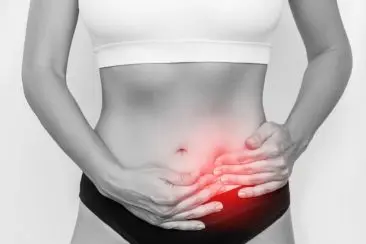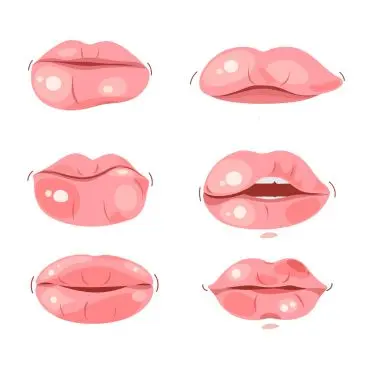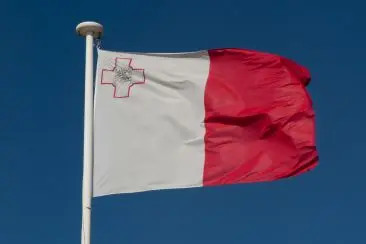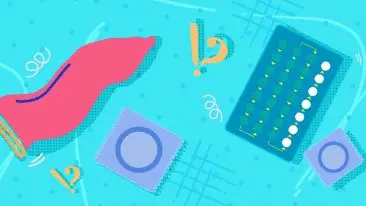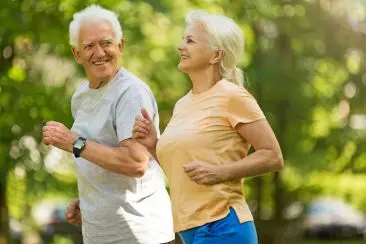Netherlands Travel Tips 2025
Travel Tips for Visiting the Netherlands in 2025 (That Tourists Google)
Planning a trip to the Netherlands in 2025? Whether you're walking along canals in Amsterdam, cycling through flower fields, or checking out cool buildings in Rotterdam, there's loads to see and do. However, even in this friendly and easy-going country, tourists still encounter the same problems: getting fined for not tapping their train card, nearly being hit by bikes, arriving at shops when they're closed, or getting caught off guard by a sudden rainstorm (yes, it happens frequently).
This guide skips the boring bits and goes straight to what people want to know: Can you pay with cash? What should you wear? Do you need to tip in restaurants? Is weed legal? And what’s the deal with all the stairs? It’s made for 2025, so everything is up to date — including new rules for public transport, weather tips, and how to behave in a way that locals respect.
Whether you're going for the big King's Day party or want a calm visit to cute towns like Delft or Haarlem, this guide helps you avoid stress. It teaches you how to stay dry, save money, and avoid trouble. Want to know when shops close, where to get a SIM card, or how to cross the street without getting shouted at by a cyclist? It's all here.
The Netherlands is full of fun, friendly people and bikes. Lots of bikes. Read on, and you’ll know what to expect, what to do (and what not to do), and how to enjoy your trip like a pro.
Netherlands Essentials at a Glance
|
Category |
Details |
|
Currency |
Euro (€) |
|
Language |
Dutch (English widely spoken, especially in cities) |
|
Emergency Numbers |
112 (General emergency, covers police, fire, medical) |
|
Plug Type |
Type C & F (230V) |
|
Visa-Free Stay |
90 days (Schengen) |
|
ETIAS Requirement |
Expected late 2025 |
Why Visit The Netherlands in 2025
The Netherlands is a small country, yet it has a great deal to offer. In 2025, it’s even easier and more fun to visit than ever before. With beautiful canals, cool cities, famous museums, and friendly people, it’s an excellent place for all kinds of travellers.
Getting around the country is super simple. Trains and buses are clean, fast, and now more eco-friendly. You can pay with your card or phone, and use apps to check times or buy tickets. Even smaller towns are easily accessible without the need for a car. Most people speak English, making it easy to ask for help if needed.
Amsterdam boasts an impressive array of art, including Van Gogh's paintings and the renowned Anne Frank House. But there's more to see beyond the big cities. Places like Utrecht, Delft, and Groningen are full of history, fun cafés, and local charm, and they're also less crowded. Many museums let you book a ticket online, so you don't have to wait in long lines.
2025 is also full of fun events. Spring is all about tulips, and you can see colourful flower fields outside the city. In the summer, music festivals, food fairs, and outdoor markets are everywhere. There are also new things to explore, like tech and design shows in Eindhoven and green travel spots around the country.
With new trains, better signs, more bike lanes, and innovative tools to help you plan, travelling in the Netherlands is smoother than ever. Whether you want to ride a bike by a windmill, eat tasty Dutch snacks, or just enjoy the views from a canal boat, the Netherlands in 2025 is ready for you.
Do You Need to Speak Dutch?
In the Netherlands, most people speak excellent English, particularly in major cities such as Amsterdam, Rotterdam, and Utrecht. You can ask for directions, order food, or check into a hotel without any problems. Many signs and menus are also available in English, making it easy to navigate.
In smaller towns or local shops, some people might not speak much English. But you can still get by. The Dutch are generally helpful and will try to understand you. Still, learning a few simple Dutch words is a nice thing to do. It shows respect and can make people friendlier towards you.
The Dutch are also known for being very direct. This means they often say exactly what they think. They are not trying to be rude. It's just how they talk, so don't take it the wrong way.
You do not need to speak Dutch perfectly. However, knowing a few useful phrases can be helpful, especially in small towns, on public transportation, or when shopping at a market.
Helpful phrases to learn:
- Hallo – Hello
- Dank je wel – Thank you
- Alsjeblieft – Please, or here you go
- Spreekt u Engels? – Do you speak English
- Mag ik de rekening alsjeblieft – Can I have the bill please
Even just a little Dutch can make your trip easier and more fun. People will see that you are trying, and that always makes a good impression.
What to Pack for the Netherlands
|
Item |
Why You Need It |
|
Plug adapter (Type C/F) |
The Netherlands uses European plug types and 230V power |
|
Light waterproof jacket |
Rain is common year-round, even in summer |
|
Comfortable shoes |
Ideal for walking and cycling around cities |
|
Reusable water bottle |
Tap water is clean and free across the country |
|
Windproof umbrella |
Dutch wind can flip normal umbrellas easily |
|
Local SIM or eSIM |
More reliable and cheaper data than public Wi-Fi |
|
Bike-friendly bag or backpack |
Handy for day trips and cycling without a car |
|
EU digital health access |
Valid for booking online doctor appointments if needed |
How to Pay in the Netherlands: Cards, Cash, and Contactless
Paying for things in the Netherlands is easy. Most shops, restaurants, and even public toilets let you use a card or your phone. Contactless payments, such as Apple Pay or Google Pay, are ubiquitous, and people use them for everything from food to train tickets.
You can use a Visa or a Mastercard almost everywhere. Some places may not take American Express. A few small shops or local cafés may only accept Dutch bank cards, so it's a good idea to bring some cash just in case.
Cash is still used, although not as frequently as it was before. You might need coins for street markets, bakeries, or small towns. If you need cash, you can find ATMs in most cities. Just know that some ATMs may charge a small fee.
Best tips for paying:
- Use a Visa or Mastercard
- Always keep a bit of cash with you
- Contactless is the fastest and easiest way to pay
Tipping in the Netherlands:
Tipping is not a big thing in the Netherlands. It is not required, but people do it when they feel the service is excellent.
How much to tip:
- In restaurants: round up the bill or leave 5 to 10 percent if you want
- In taxis: round up to the nearest euro
- In hotels: €1 or €2 for staff like cleaners or porters, if you like
A small tip is a nice way to say thank you, but no one will be upset if you do not leave one.
Can You Drink the Tap Water in the Netherlands?
Yes, it is entirely safe to drink tap water in the Netherlands. The water is clean, fresh, and regularly checked to ensure it is secure. No matter if you are in a big city like Amsterdam or a small village, you can drink the water straight from the tap.
You do not need to buy bottled water unless you want to. Most people in the Netherlands use refillable bottles and fill them up from taps at home, in parks, train stations, or public toilets. Many cities also have free drinking fountains where you can refill your bottle.
Using a refillable bottle is a brilliant idea. It helps protect the environment by reducing plastic waste, and it saves you money. You will see lots of locals doing the same thing.
In restaurants, though, things can be a little different. Most restaurants offer bottled water for free but charge for it. They may not provide tap water unless you request it. If you want tap water, you can politely say, "Mag ik kraanwater, alsjeblieft?" (which means "Can I have tap water, please?"). Some places offer it for free, while others charge a small fee.
To sum up, tap water in the Netherlands is safe, clean, and readily available. Carry a water bottle with you, and you can refill it almost anywhere. It's a simple way to stay healthy and save money while exploring the country.
What to Expect from Public Toilets in the Netherlands
Public toilets in the Netherlands are usually easy to find in cities, parks, train stations, and shopping centres. But they are not always free. In many places, you have to pay between 50 cents and 1 euro to use the toilet.
Some toilets are spotless and modern, while others are more basic in design. Many now accept card payments, but some still only take cash. It's a good idea to carry a few coins just in case.
In small towns or villages, it can be harder to find a public toilet. If you need one, you can visit a café and purchase a drink to use their facilities. This is a common practice in the Netherlands, and people do it frequently.
In parks or busy tourist places, you might see signs that say “WC” or “Toiletten” — this means toilet. Sometimes, portable toilets are available at festivals or other significant outdoor events.
What to carry:
- Some coins for toilets that are not free
- Tissues, in case there is no toilet paper
- Hand sanitiser, to clean your hands after
Public toilets in the Netherlands are generally safe and clean, although not always free. Be prepared, and you will be fine. And remember, it's okay to pop into a café if you need to use the restroom; just be polite and buy something small, like a drink.
What to Wear in the Netherlands: Dress Codes and Style
People in the Netherlands like to dress in a tidy and straightforward way. Clothes are usually comfortable, but still neat. You will not see many people wearing bright colours or fancy outfits every day. Most locals wear comfortable clothing, such as jeans, jumpers, jackets, and trainers, suitable for walking or cycling.
The weather can change quickly. It might be sunny in the morning and rainy in the afternoon. That is why it is best to wear layers so you can take something off or put it on when needed. A light waterproof jacket is always a good idea, even in summer.
In big cities like Amsterdam or Rotterdam, people dress casually but still look smart. Tourists who wear very bright clothes, big backpacks, or beachwear can stand out. Flip-flops or sportswear are not very common, unless you are at the beach or engaging in sports.
There are not many places with dress rules. However, when visiting a church or other important buildings, it is best to wear respectful attire. This means no short shorts or crop tops. When dining at a nice restaurant, it's best to wear bright yet simple clothes.
Things to pack:
- A waterproof jacket
- Comfortable shoes for walking
- T-shirts, jumpers, and a warm scarf for layering
- Clothes that dry quickly if they get wet
- A bright outfit for going out to eat
To sum up, dress in a way that is comfy and tidy. The Dutch care more about practical clothes than fashion, but they still look neat. If you dress simply and are ready for the weather, you will fit right in.
Closures on Sundays and Opening Hours in the Netherlands
In the Netherlands, most shops, supermarkets, and restaurants are open during the day, but Sundays can be a bit different. In major cities like Amsterdam, Rotterdam, and Utrecht, many establishments remain open on Sundays. However, in small towns and villages, some shops may open late or stay closed throughout the day.
Supermarkets and shopping centres often open from around noon until about 6 pm on Sundays. In quieter places, nearly everything is closed, so it's a good idea to check the opening hours before you go.
Unlike in some countries, shops in the Netherlands do not close in the afternoon for a break. Most are open all day from morning to evening. Pharmacies are a bit different. They often close earlier than other shops and may be shut on Sundays. However, there is usually one open pharmacy in each area, known as the “dienstapotheek.” You can find it online or on signs outside pharmacies that are closed.
Restaurants and cafés are usually open on Sundays, especially in cities or popular tourist places. In smaller towns, some might be closed or open for shorter hours. If you want to eat out for dinner, it's smart to book a table, especially on weekends.
Things to remember:
- Shops in small towns might be closed on Sundays
- Supermarkets often open later on Sundays, around midday
- Pharmacies may be closed, but one nearby is usually open
- There is no afternoon closing time, but places may shut earlier in the evening.
Planning can help you avoid problems and enjoy your day without any surprises.
Getting Around the Netherlands and Avoiding Fines
Getting around the Netherlands is easy. You can travel by train, tram, bus, or bike. Trains are clean, fast, and usually on time. Big cities like Amsterdam, Rotterdam, and The Hague are well-connected. Local buses and trams help you get around once you arrive.
However, there are some rules you should be aware of. One important rule is that you must always tap in and tap out. This means you need to tap your bank card, phone or travel card on a scanner at the start and end of your trip. If you forget, you might get a fine of up to 50 euros.
Travel tips:
- Always tap in when you get on, and tap out when you get off
- You can use a contactless bank card or buy a travel card called an OV-chipkaart
- Look at the signs to make sure you are on the right train or tram
- Use the NS or 9292 travel app to check times and routes.
Cycling is very popular in the Netherlands. There are bike lanes everywhere, and people ride quickly. Never walk in a bike lane, and always look both ways before crossing one. If you rent a bike, follow the rules, use bike lights at night, and lock your bike when you park it. If you break the rules, you could get a fine.
Driving a car is possible, but parking is expensive and hard to find. Some city centres do not allow cars at all. It is usually easier to take public transport.
With a bit of planning and care, travelling around the Netherlands is fun and straightforward.
Is the Netherlands Safe for Tourists in 2025
Yes, the Netherlands is a very safe country to visit in 2025. Most people feel safe walking around, even in the evening. Cities are clean, calm, and well organised. Violent crime is very rare.
However, like in any popular tourist destination, you still need to be cautious with your belongings. Pickpocketing is more likely to occur in crowded areas, particularly those frequented by tourists.
Be extra careful in places like:
- Amsterdam Central Station
- Busy trams and metro lines during rush hour
- Tourist spots like Dam Square and the Red Light District
Most of the time, problems happen when people are not paying attention. Thieves may steal bags left unattended or phones left on café tables.
Safety tips:
- Use a bag with a zip and keep it in front of you
- Do not leave your phone, wallet, or camera on a table
- Stay alert in crowds and busy places
- Walk on well-lit streets at night and try to avoid being alone.
The police in the Netherlands are friendly and speak English. If you need help, they are easy to talk to. The emergency number is 112.
Generally, the Netherlands is regarded as one of the safest destinations to travel in Europe. If you stay aware of your things and use common sense, you should have a safe and happy trip.
Restaurant Rules and Eating Out in the Netherlands
Eating out in the Netherlands is a relaxed and straightforward experience. People enjoy good food, but their meals are not particularly fancy. You can eat at cafés, restaurants, or small places called eetcafés that serve tasty local food.
When you sit down, someone will bring you a menu. The service might feel a bit slow, but that is normal. The staff do not want to rush you, so if you need something, just wave politely or try to catch their eye.
One thing to remember is that they will not bring the bill unless you ask. You can say, "Mag ik de rekening, alsjeblieft," which means "Can I have the bill, please" in Dutch.
Things to remember:
- Always ask for the bill when you are ready to leave
- You do not have to tip, but rounding up or leaving a euro or two is kind
- Tap water is not always offered, so you may need to ask for it
- Most places prefer card payments over cash
- You usually pay at the table, but in some cafés or snack bars, you might pay at the counter.
The Dutch are generally polite but not overly formal. They may not talk much to the waiter, and that is normal. As long as you are respectful and kind, you will have a nice time and enjoy a good meal.
What If You Get Sick in the Netherlands
If you get sick while visiting the Netherlands, do not worry. The country has good doctors and hospitals. If you are from the UK or another EU country, you can use your EHIC or GHIC card to get medical help at public clinics or hospitals. Most doctors speak English, particularly in urban areas. However, you may have to wait a while if it's not an emergency.
For minor problems, using an online doctor like Mobi Doctor can be a quicker and easier option. You can talk to a doctor on your phone, tablet, or computer from anywhere in the Netherlands, whether you're in Amsterdam, a small village, or even at your hotel.
You can use Mobi Doctor for:
- Cold and flu
- Skin rashes or bites
- Prescription refills
- Stomach aches or infections
- Travel health advice
The doctor can send your prescription directly to a local pharmacy, allowing you to obtain your medicine quickly without needing to visit a clinic.
Sun and Weather Safety in the Netherlands
|
Risk |
What to Do |
|
Sunburn |
Use sun cream with SPF 30 or higher, even on cool days |
|
Rain and wind |
Wear layers and carry a light waterproof jacket |
|
Mosquito bites |
Use bug spray and wear long sleeves in the evening |
|
Cold weather |
Bring a jumper or coat, even in spring or autumn |
The weather in the Netherlands can change rapidly, so it's good to be prepared. If you feel unwell, Mobi Doctor is a simple way to get help and feel better quickly.
Sun Safety and Heat Protection in the Netherlands
The Netherlands is not a very hot country, but summer can still be warm and sunny. This usually happens between June and August. Even if it feels cool or windy, the sun can still be intense, and you might get sunburnt without realizing it.
To stay safe in the sun:
- Use sunscreen with SPF 30 or more, even on cloudy days
- Wear sunglasses to protect your eyes
- Put on a hat or cap if you are outside for a long time
- Reapply sunscreen often, especially after swimming or sweating
- Drink water often so you do not get dehydrated.
The sun’s rays can still harm your skin even when it doesn't feel hot. This is common if you are walking, cycling, or spending time outdoors all day.
If you get sunburned or feel tired, dizzy, or sick from the sun, try to rest in the shade and drink plenty of water. If your skin hurts or you feel worse, you can use Mobi Doctor. A doctor can talk to you online and help you get the right cream or medicine from a nearby pharmacy.
Summer in the Netherlands is a great time to explore, but it's still essential to take care of your skin and stay hydrated. These small steps can help you stay happy and healthy on your trip.
Beach Safety and Insects in the Netherlands
The Netherlands has lots of lovely beaches with soft sand and clean water. Most beaches are free, and many are easily accessible by train or tram. Some busy beaches, like Scheveningen or Zandvoort, have lifeguards in summer, but smaller ones may not. So always be careful when swimming.
The sea can have strong waves and currents, even when the weather looks nice. Always swim in areas with flags and signs. If you see a red flag, do not go in the water.
Jellyfish are not common, but they can show up when the water is warm. Most jellyfish in the Netherlands are harmless, but some can cause a sting. If you are swimming near rocks, it is a good idea to wear water shoes to protect your feet.
In summer, you might also see mosquitoes, especially near lakes, rivers, or campsites. Some are tiger mosquitoes, which bite during the day. Their bites are not dangerous, but they can be very itchy.
To stay safe and comfortable:
- Only swim in areas marked as safe
- Wear water shoes to protect your feet
- Use bug spray to stop mosquito bites
- Keep windows closed at night or use a screen
- Bring cream for itchy bites, just in case
The beach is a fun place to visit in the Netherlands. With a few simple steps, you can enjoy the sun, sand, and sea without any problems.
Visa and Entry Rules for the Netherlands
In 2025, most people from the UK, the US, Canada, Australia, and many other countries can visit the Netherlands for up to 90 days without a visa. However, from the end of 2025, visitors from outside the EU will be required to complete an ETIAS form online before traveling. It’s a short form to help keep travel safe and healthy.
Top Travel Apps for the Netherlands
- NS – book and plan your train journeys
- 9292 – check buses, trams, and trains in real time
- Buienradar – see when it will rain (very useful!)
- Thuisbezorgd.nl – order food from local restaurants
- Google Translate – understand signs and menus in Dutch
- Dokteronline – get online health advice and medicine if needed.
Avoid These Tourist Mistakes in the Netherlands
- Forgetting to tap in and out on transport: Always tap your card or ticket when you get on and off trains, trams, and buses — or you might get a fine.
- Walking in bike lanes: Cycle paths are for bikes only. Walking there is hazardous and can be unsettling for cyclists.
- Not booking museum tickets early: Places like the Anne Frank House often sell out. Book online before you go.
- Thinking everyone speaks English: Many people do, but learning a few Dutch words is polite and appreciated.
- Feeding birds in the canals: It may seem friendly, but it’s bad for the animals and the water.
- Only bringing cash: Some shops and cafés don’t take cash. Bring a card that works in Europe.
Best Day Trips from Big Cities in the Netherlands
From Amsterdam:
- Zaanse Schans – see windmills and old Dutch houses
- Haarlem – a small city with cool shops and museums
- Utrecht – quiet canals and fun places to explore
From Rotterdam:
- Kinderdijk – lots of windmills and pretty views
- The Hague (Den Haag) – royal palaces and a beach
- Delft – a cute town known for its blue and white pottery
From Utrecht:
- Amersfoort – old city walls and nice cafés
- Gouda – try cheese and walk around the town square
- De Hoge Veluwe – a big park with trees, bikes, and art
Netherlands Travel Checklist Before You Go
- A passport and a copy of your ID
- Travel insurance or EHIC/GHIC health card
- Plug adapter (Type C or F) to charge your phone
- Offline maps and the Google Translate app
- Jacket or raincoat – the weather can be rainy
- Reusable water bottle – tap water is safe to drink
- Comfy shoes for walking and cycling
- A bank card that works in Europe – some places don’t take cash
- Some Euros in money for markets or small shops
- A health app like Dokteronline – in case you feel sick
Need Medical Help While in the Netherlands?
Mobi Doctor allows you to speak with a doctor online. It’s fast, private, and easy to use. You can get medicine and help without going to a clinic—no need to worry about speaking Dutch or finding an open pharmacy. You can use it anywhere in the Netherlands.

